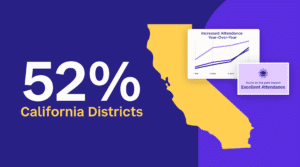
Featured Resource
Why Over Half of California School Districts Trust SchoolStatus
Read More >Join Mission: Attendance to reduce chronic absenteeism in 2025-26! >> Learn How <<





Are you struggling with where to begin as you prep your next professional development session? Latoya Reed, district instructional coach in Tennessee, walks through her step-by-step guide for creating targeted PD and how to avoid roadblocks that may come your way.
Professional development is an essential role for instructional coaches, as it allows us to share our knowledge with teachers to help them grow their instructional capacity. Over my career, I’ve developed five steps that help me to plan and prepare for a PD session, with guiding questions to help along the way.
The first step that I take is to make decisions about the PD. During this step, think through the following questions:
When you have established your presentation type, focus, and goals, it’s time to focus on your audience. Ask yourself:
Now the fun begins—this is your chance to brainstorm and think about all of your ideas for the session. I like to start with a brain dump:
The last bullet point is key. Educators are more receptive to new information when it’s researched-back and has data that supports it.
An integral part of the preparation includes estimating the timing of each slide to ensure you don’t run over—and that you’re making the most of your allotted time. With your outline handy, take a moment to think about everything you have to prepare for the presentation. This could include: agendas, handouts, copies, note catchers, and technology. Then, when the day has arrived, arrive early to set up, work through technology issues, and do a last-minute check to ensure you have everything you need.
Let me give you an example from my own experience of why this is crucial. During one of my presentations, I learned that my laptop didn’t have the input that the projector at the hotel needed to plug into my computer, so I ended up using someone else’s computer. Luckily, I arrived early and was able to work everything out!
Pro-tip: Run through your presentation ahead of time and type any ideas you want to mention that are key for each slide in the notes section.
After your successful PD session, it’s reflection time. Ensure that you make time for your participants to reflect and provide feedback on the session, which gives you solid data on how the presentation went and how you can improve it in the future.
Make sure you don’t leave all the reflection for the participants—be sure to do some yourself! Think about what you wish would have happened differently, what went well, and whether or not the goals you set were achieved. Self-reflection about your preparation and delivery will aid in continuous improvement of your coaching work.
By carefully prepping using the guiding questions in this five-step process, you can plan and deliver a presentation to help your teachers not only grow their instructional capacity but also leave them with new skills to bring back to the classroom.
Latoya Reed is an experienced instructional coach in her 15th year in education. Before her current role as a District Lead Literacy Coach—where she supports eleven schools and literacy coaches to help them carry out their vision for literacy—she was a classroom teacher for eight years instructing ESL students. She taught Kindergarten, first grade, and second grade. Latoya has also been an ESL co-teacher and provided support for ESL students in the general education classroom, plus a school-based coach for three years.
Latoya lives in the Nashville, TN area with her husband and serves as the Flying into Learning curriculum creator. Be sure to connect with her on Twitter @flyintolearning!
 Latoya ReedLatoya Reed, an adept instructional coach with 15 years in education, serves as District Lead Literacy Coach, guiding eleven schools and literacy coaches in realizing their literacy vision. Her background includes eight years as a classroom teacher, specializing in ESL instruction across Kindergarten to second grade, and roles as an ESL co-teacher and school-based coach.
Latoya ReedLatoya Reed, an adept instructional coach with 15 years in education, serves as District Lead Literacy Coach, guiding eleven schools and literacy coaches in realizing their literacy vision. Her background includes eight years as a classroom teacher, specializing in ESL instruction across Kindergarten to second grade, and roles as an ESL co-teacher and school-based coach.
News, articles, and tips for meeting your district’s goals—delivered to your inbox.
Ready to learn more about our suite of solutions?
